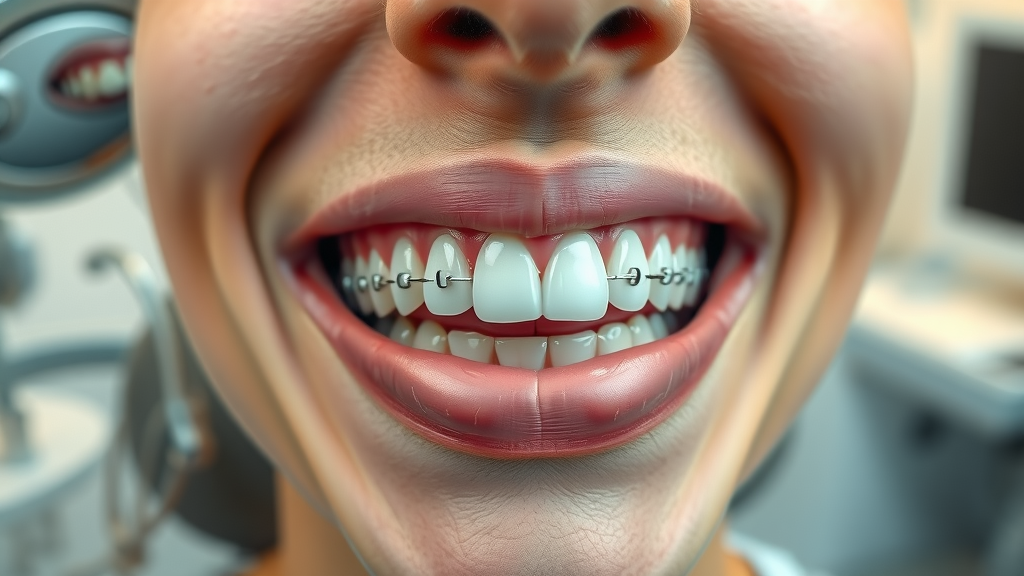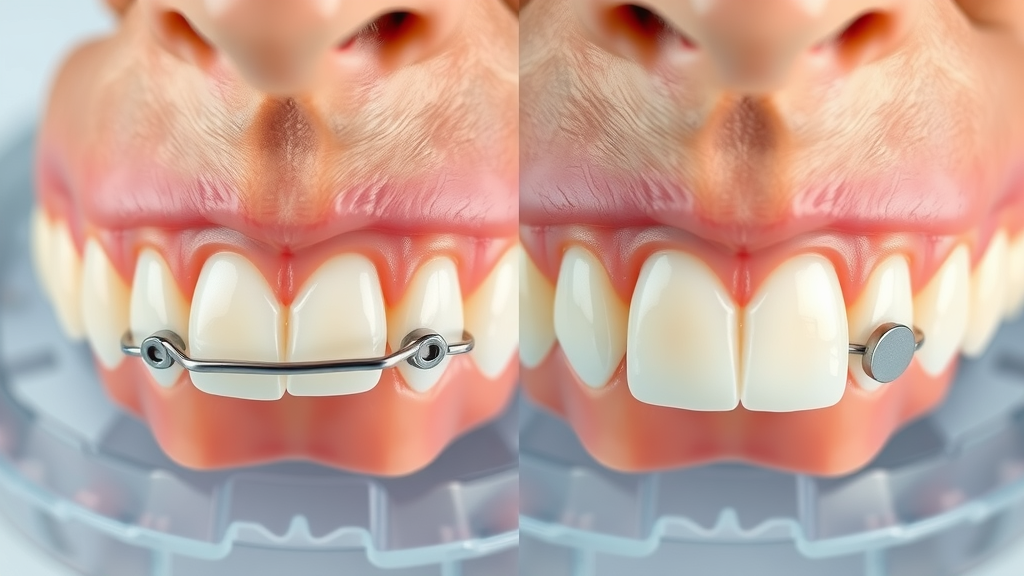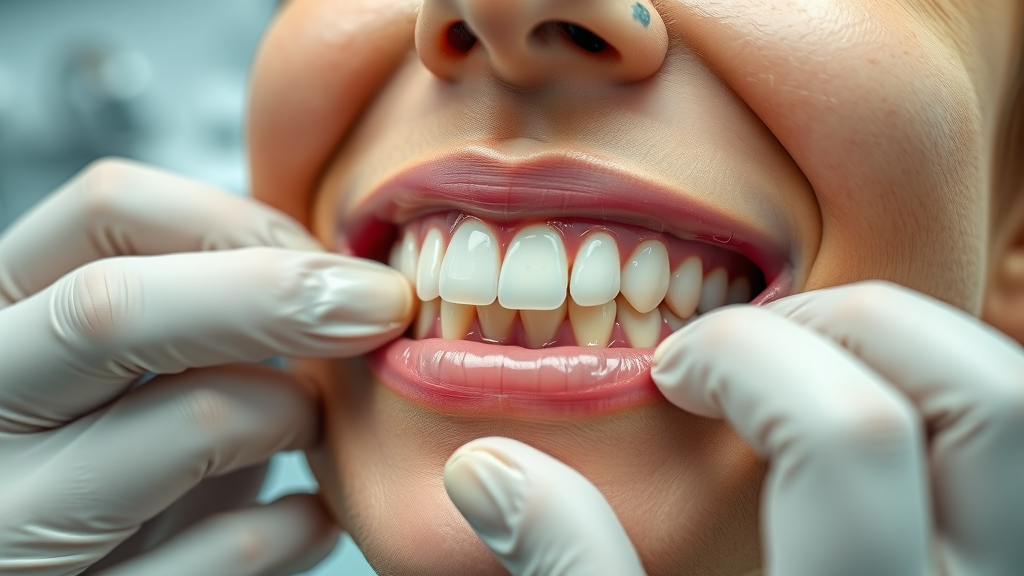Ever wondered what those tiny rubber rings your orthodontist puts between your teeth are really for—and if they hurt as much as you've heard? If the idea of orthodontic spacers has you anxious or curious, you’re not alone. Many patients on their orthodontic journey ask, “What are spacers, and do they hurt?” From first-hand patient experiences to expert-approved tips for reducing pain, this guide unpacks the reality behind orthodontic spacers. By the end, you’ll know exactly what to expect, how to handle discomfort, and where to find the best solutions for a smoother, more confident smile transformation.
Curious About What Are Spacers, and Do They Hurt? Start Here
If your orthodontist has mentioned spacers for braces, you might be picturing tiny rings or unfamiliar devices wedged between your teeth. Orthodontic spacers—sometimes called dental spacers or separators—are small rubber bands or metal rings placed between your back teeth as the first step before getting braces. Their job is to create a small space between your molars so that bands used to anchor your braces can fit snugly. But here’s the big question: What does it actually feel like?
The thought of placing something between your teeth can be a little intimidating, especially if you’re worried about the pain. Most patients report mild discomfort or a feeling like food is stuck between their teeth, especially in the first few days. However, with practical tips and active care, most people adapt quickly. In this article, we’ll share real patient stories, expert pain relief methods such as soft food and warm salt rinses, and a close look at different types of spacers—so you know exactly what’s ahead in your orthodontic treatment.
Why Orthodontic Spacers Matter in Your Orthodontic Treatment
Orthodontic spacers play an essential role in the early phases of orthodontic treatment . Think of them as the “prep work” that makes all the difference for smooth, aligned teeth later. By gently pushing your molars apart, spacers ensure enough room to properly fit molar bands or orthodontic bands —the metal rings that act as anchors for braces, especially around your back teeth.
Without these spacers, molar bands would be difficult or impossible to install, slowing down your entire orthodontic journey. Most orthodontists place spongy small rubber or sturdy metal spacers about a week before the rest of your braces go on. It’s a short step with a long-term payoff: ensuring that traditional braces work efficiently to correct even the most crooked teeth.

What You'll Discover About Orthodontic Spacer Pain and Solutions
- A clear explanation of what spacers are and their purpose in braces.
- Real patient experiences of pain and discomfort associated with orthodontic spacers.
- Expert-approved tips for pain relief such as warm salt water rinses and cold compresses.
- Insight into the duration and intensity of discomfort with spacers for braces.
Defining Orthodontic Spacer: What Are Spacers, and Do They Hurt?
Let’s clarify exactly what an orthodontic spacer is. These spacers are small circular tools made from rubber band material (elastic) or stainless steel. Your orthodontist inserts them gently between your back teeth (usually molars) to create just enough gap for a molar band or other brace attachments. While they are a crucial step before fitting metal bands or traditional braces , patients often worry if spacers install with pain.
In reality, you’ll likely feel tightness or pressure as the orthodontic spacers work to move your teeth slightly apart. For most patients, this is the peak of any discomfort—comparable to a slight pinch or the feeling after biting into something tough. The good news? You’ll rarely need these spacers for more than a week or two, and soreness usually fades well before removal.
Orthodontic Spacers Explained—Why Are Spacers Used for Braces?
Why do orthodontists use spacers for braces? The answer lies in the need for accuracy and comfort. Most spacers for braces are used to create a space between teeth —especially the molars at the back of your mouth. This gap is necessary for placing a molar band (a key part of many braces systems) that helps move or anchor teeth during orthodontic treatment .
If your teeth are crowded or you have aligned teeth , the bands can’t fit properly without making room first. Spacers solve this by gently, gradually widening the gap over a few days. While the insertion process is quick, the sensations you feel—including mild soreness or pressure—are completely normal as your teeth adjust.
How Orthodontic Spacers Fit Into Your Orthodontic Treatment
Your orthodontist’s plan may include spacers early in your orthodontic journey, especially if metal bands or metal rings are needed for your particular case. Once spacers are inserted , you’ll usually wear them for about one to two weeks . The main goal? To ensure that the subsequent steps—fitting molar bands and installing braces—are comfortable, precise, and trouble-free.
Remember, spacers are only a temporary phase. Once your orthodontist confirms your back teeth have enough room, the spacers are quickly removed and replaced with the molar bands or braces hardware, moving you one step closer to beautifully aligned teeth.
Types of Spacers: Rubber Band and Metal Spacers for Braces
There are two main types of spacers used in orthodontics: rubber band spacers and metal spacers . The right type for you depends on your dental needs and the shape of your teeth. Both types of orthodontic spacers have one important job—making room so your braces can work properly—but each comes with its own pros, cons, and comfort levels.
Understanding the differences between rubber and metal spacers helps you know what to expect and can guide your pain management decisions. Let’s compare both below.
| Type of Spacer | Material | Typical Discomfort Level | Use-Case | Removal Process |
|---|---|---|---|---|
| Rubber Band Spacers | Elastic (Rubber) | Mild to moderate—often a feeling of tightness or pressure for a few days | Most common; used for patients with average spacing needs | Removed by hand or with simple dental tools at the next appointment |
| Metal Spacers | Stainless Steel (Metal) | Slightly more pressure—especially for tight teeth or stubborn gaps | Used where elastic spacers are less effective; more common in adults | Removed by orthodontist using special pliers |

Rubber Band Spacers – When Are They Used?
These small elastic rings are most commonly used as spacers for braces. Rubber band spacers are often chosen for younger patients and those with average-sized gaps, as the pliable material is generally more comfortable and adapts easily to the shape of your back teeth . Your orthodontist may recommend rubber spacers if your teeth need just a little movement, or if you’re early in your orthodontic treatment journey.
Typical symptoms include pressure, a sore jaw from biting, and a sense of “fullness” in your mouth. Many patients compare it to having food stuck between their teeth. Fortunately, rubber band spacers are easy to remove and almost always cause only short-term discomfort.
Metal Spacers – Benefits and Challenges
While less common, metal spacers (or metal rings ) may be necessary for people with very tight teeth or where rubber spacers haven’t stayed in place. These spacers can apply more persistent pressure, so the feeling is a bit more intense—sometimes described as a dull throb or increased soreness. Metal spacers are a good option for adults or late teens, whose teeth may be harder to move.
The challenge with metal spacers is the removal process (performed by your orthodontist) and the potential for a slightly longer adjustment period. Still, they’re highly effective—making sure molar bands or metal bands can slide onto your back teeth as intended for braces or expanders.
What Are Spacers, and Do They Hurt? The Patient Experience
Nothing beats hearing real stories from patients who have experienced spacers for braces. While mild tenderness and discomfort are common, most say the anticipation is worse than the reality. As one patient recalled:
‘When I first got my spacers, the pressure was intense, like food stuck between my teeth, but it eased after a few days.’ – Real Patient Story
This is typical: If you’re worried about pain, know that it’s usually short-lived. The symptoms are manageable, and soon your mouth will adjust—and you’ll move on to the next phase of your orthodontic treatment with greater confidence.
How Painful Is Getting Spacers? First Impressions and Initial Soreness
The process of getting orthodontic spacers is straightforward and quick, but those first hours after placement can feel odd. Many patients notice a strong sensation of pressure—especially as their teeth start to move and make space. In the first 24 to 48 hours, it’s not unusual to feel sore when chewing, biting, or even simply clenching your jaw.
Pain levels vary depending on your teeth’s initial tightness and the type of spacer used. Some feel only mild discomfort, while others experience moderate soreness, especially when chewing on the back teeth or biting into hard foods. The soreness will decrease with each passing day, leaving most patients with little to no pain by the end of the week.

Do Spacers Hurt for Kids? Managing Comfort for Young Patients
Children can be especially sensitive to changes in their mouths, so orthodontic spacers often cause anxiety in young patients (and their parents). The good news is that most kids experience only mild discomfort, which easily responds to at-home care such as cold compress or soft foods like ice cream and mashed potatoes .
If your child is uneasy about spacers, explain that it’s a temporary sensation, and offer gentle foods for the first few days. Distraction, reassurance, and encouragement—along with a dose of patience—will help kids through this short phase on the way to straighter, more aligned teeth .
Which Hurts More: Spacers or Braces? What Are Spacers, and Do They Hurt More?
Both spacers for braces and braces themselves can cause soreness, but they’re not identical pains. Most patients find that the tight pressure from spacers is sharpest during the first two days, while the feeling from braces comes later (often during tightening adjustments) and may linger longer.
If you’re comparing both experiences, spacers usually make your teeth sore only while they’re creating the necessary gap—and once they’re out, the discomfort ends quickly. Braces, on the other hand, shift your teeth for months and may cause soreness after every adjustment. Thankfully, both are temporary and manageable with good self-care.
How Long Do Orthodontic Spacers Hurt? Timeline and What To Expect
A common question is, “How long will I feel sore after getting orthodontic spacers?” For the majority, discomfort peaks within the first two days and then fades steadily. Personal pain tolerance and teeth tightness play a role, but nearly everyone adjusts after about a week.
Your orthodontist will remove the spacers as soon as enough room has formed for molar bands or metal bands . If pain continues beyond the first week or becomes severe, it’s time to check for trapped food, gum issues, or to see your orthodontist for adjustments.
Duration of Discomfort With Spacers for Braces
Most people report mild to moderate tenderness, especially when eating or brushing around the spacer area, for about three days. After this, soreness often turns to mild pressure or even disappears as your teeth settle into their new positions. The spacers for braces are removed within one to two weeks, making this step short-lived in your orthodontic journey.
If you have especially tight teeth or your orthodontist uses metal spacers instead of rubber, you might notice extra pressure or a dull ache. Still, even those with sensitive teeth find relief after three to seven days.
Why Is My Spacer Painful? Common Causes and Solutions
While soreness is normal, severe or lingering pain may signal an issue. The most common causes of spacer pain include having very tight gaps between your back teeth , food trapped around the spacer, or movement of the spacers. An improperly seated spacer may pinch the gum, causing more discomfort.
Best solutions include keeping the area clean by rinsing your mouth with warm salt water, avoiding sticky foods, and following your orthodontist’s instructions for hygiene and pain relief. Persistent pain—even with good care—should prompt a quick call to your orthodontist.
Pain Relief: Soft Foods, Warm Salt Rinses, and Cold Compress for Orthodontic Spacer Discomfort
If you’re dealing with soreness from orthodontic spacers, don’t worry—there are several ways to find relief. Eating soft food , rinsing with warm salt water, and applying a cold compress can dramatically reduce discomfort and help you heal faster.
- Eat soft foods: Stick to mashed potatoes , yogurt , scrambled eggs , or ice cream for the first few days.
- Use warm salt water rinses: Swish warm salt water gently in your mouth to soothe sore gums.
- Apply cold compress: Placing a cold pack on your cheek numbs the area and eases swelling.
- Avoid sticky/chewy foods: Chewing gum, caramel, or tough bread can dislodge spacers or increase pain.
- Over-the-counter pain relievers: Use approved medicines sparingly—always check with your orthodontist first.

Caring for Orthodontic Spacers to Minimize Discomfort
Proper care is vital for keeping orthodontic spacers clean, preventing complications, and ensuring your treatment stays on track. Focus on gentle brushing, avoiding hard or sticky foods, and checking your spacers daily to make sure they stay in place. Dislodged spacers can disrupt your orthodontic treatment schedule, so careful attention pays off.
Remember, a little extra care now means fewer setbacks later. Always follow your orthodontist's advice for cleaning, eating, and reporting any issues right away.
Diet Recommendations: The Role of Soft Foods with Spacers for Braces
Choosing soft foods helps protect your spacers and keeps discomfort at bay. Popular foods include scrambled eggs , ice cream , yogurt , smoothies , applesauce, and mashed potatoes . These foods are easy to chew and soothing to sore mouths, especially for children or first-timers.
Try to avoid hard, crunchy, or chewy foods during this phase—skip nuts, raw veggies, chewy bread, and sticky candies until your spacers are removed. This gentle approach reduces soreness and prevents you from pulling out a spacer accidentally.

When to Contact Your Orthodontist About Spacer Pain
While some soreness is expected, persistent pain, swelling, or bleeding near your spacers is not normal. Contact your orthodontist if you notice a dislodged spacer, sharp discomfort that doesn’t respond to soft foods or salt rinses, or if you suspect an allergic reaction. The quicker you address concerns, the smoother your orthodontic treatment will be.
Your orthodontist may need to replace a missing spacer, check for infection, or adjust your treatment plan. Prompt care is the best way to avoid delays on your journey to straighter teeth.
People Also Ask: In-Depth Answers About What Are Spacers, and Do They Hurt?
How Painful is Getting Spacers?
- Spacers can cause mild to moderate discomfort for the first few days, often described as pressure between the teeth. This pain usually subsides as the mouth adjusts.
Which Hurts More, Spacers or Braces?
- Most patients report initial soreness with spacers, but overall, getting braces tightened is often described as slightly more uncomfortable.
Do Spacers Hurt for Kids?
- Kids may experience sensitivity with spacers, but gentle care and home remedies (like cold compresses) can help manage discomfort effectively.
Why is My Spacer Painful?
- Spacer pain can result from tight gaps, food trapped around the spacer, or unusual movement. Persistent pain should be evaluated by your orthodontist.
Expert Insights and Research on Orthodontic Spacer Experiences
- Clinical studies on orthodontic spacer pain and effective coping strategies
- Advice from leading orthodontists on spacer care and comfort
Frequently Asked Questions About What Are Spacers, and Do They Hurt?
- Can anyone get orthodontic spacers before braces?
- How do you maintain dental hygiene with spacers?
- Are there side effects to spacers for braces?
- How should children be prepared for orthodontic spacer discomfort?
Summary: Key Takeaways for Patients Wondering What Are Spacers, and Do They Hurt?
- Spacers are a common step in orthodontic treatment and may cause initial discomfort.
- Pain relief methods such as soft foods and warm salt water help greatly.
- Spacer discomfort is temporary and should not cause lasting pain.
- Seek professional advice if pain is severe or ongoing.
Patient Stories: Firsthand Experiences With Orthodontic Spacers and Pain Relief
Your Smile Journey: Stay Informed About What Are Spacers, and Do They Hurt?
‘Knowledge is the best remedy. Understanding what are spacers, and do they hurt prepares you for a smoother orthodontic treatment.’
- Want more expert-backed answers about braces, Invisalign, and local orthodontic care? Subscribe to Grand Strand Smile Spotlight and stay ahead of your smile journey.
Take charge of your orthodontic journey today—explore more resources, ask questions, and let knowledge be your pain reliever!
Orthodontic spacers, also known as separators, are small devices placed between teeth to create space for braces. While they are essential for orthodontic treatment, many patients wonder about the discomfort they might cause.
According to the article “Spacers for Teeth: What Are They and Are They Painful?” on Dentaly.org, spacers are typically placed between the molars to create space before braces are fitted. Most people experience some pain or discomfort from spacers, as they put pressure on the teeth and force them to move quickly. The level of discomfort varies depending on the individual’s teeth spacing and sensitivity. Discomfort can be minimized by drinking cold drinks, eating ice cream, and taking over-the-counter pain relievers as prescribed. ( dentaly.org )
Similarly, the article “Spacers for Braces: How They’re Used, If They Hurt, and Oral Care” on Healthline.com notes that while the process of having spacers put in is usually quick and easy, it can be uncomfortable or even painful. Patients may feel pressure or a pinching sensation as the spacer is placed between their teeth, and some experience soreness or sensitivity afterward. ( healthline.com )
If you’re preparing for braces and concerned about spacers, these resources provide valuable insights into what to expect and how to manage any discomfort.
 Add Row
Add Row  Add
Add 




Write A Comment